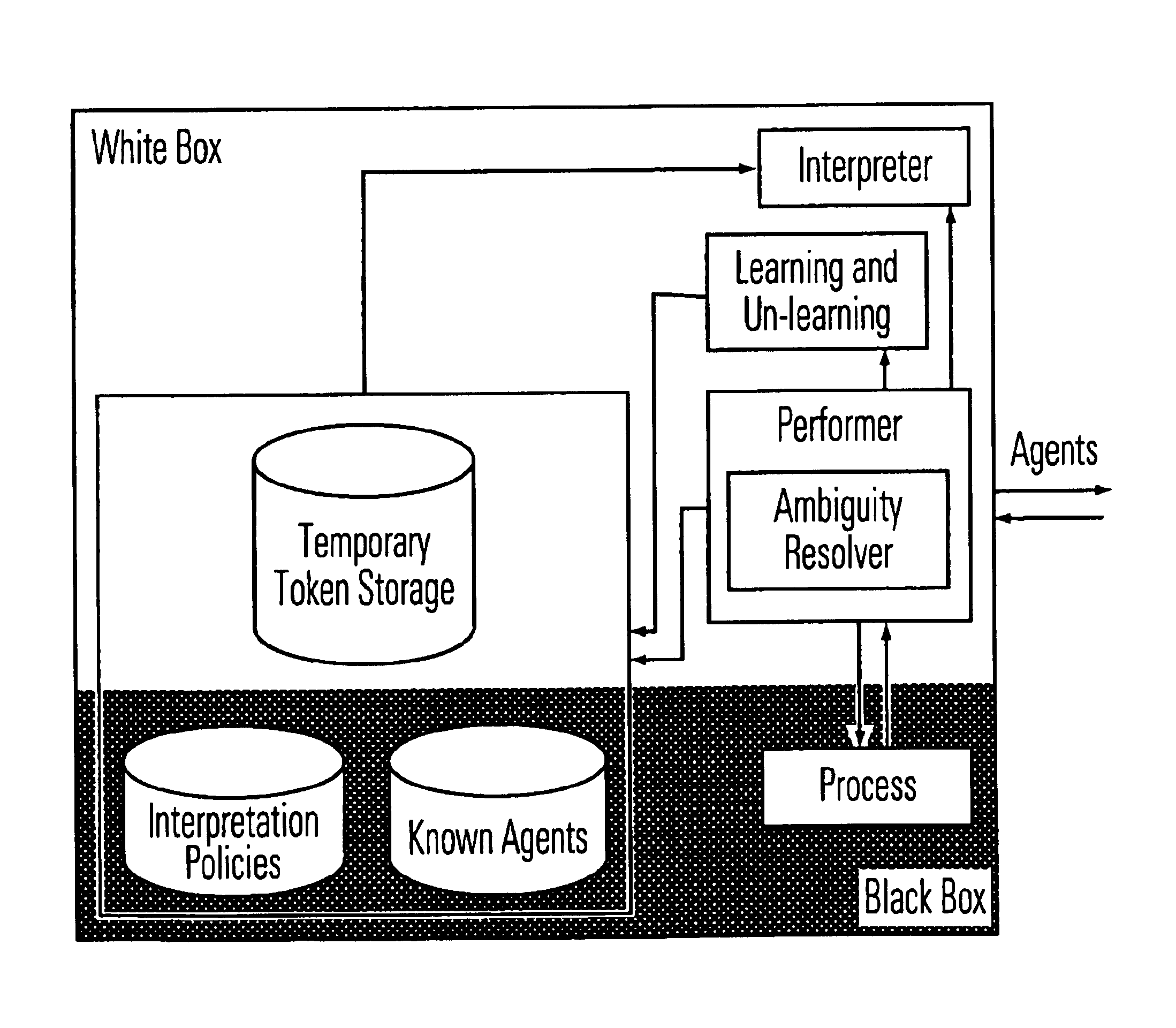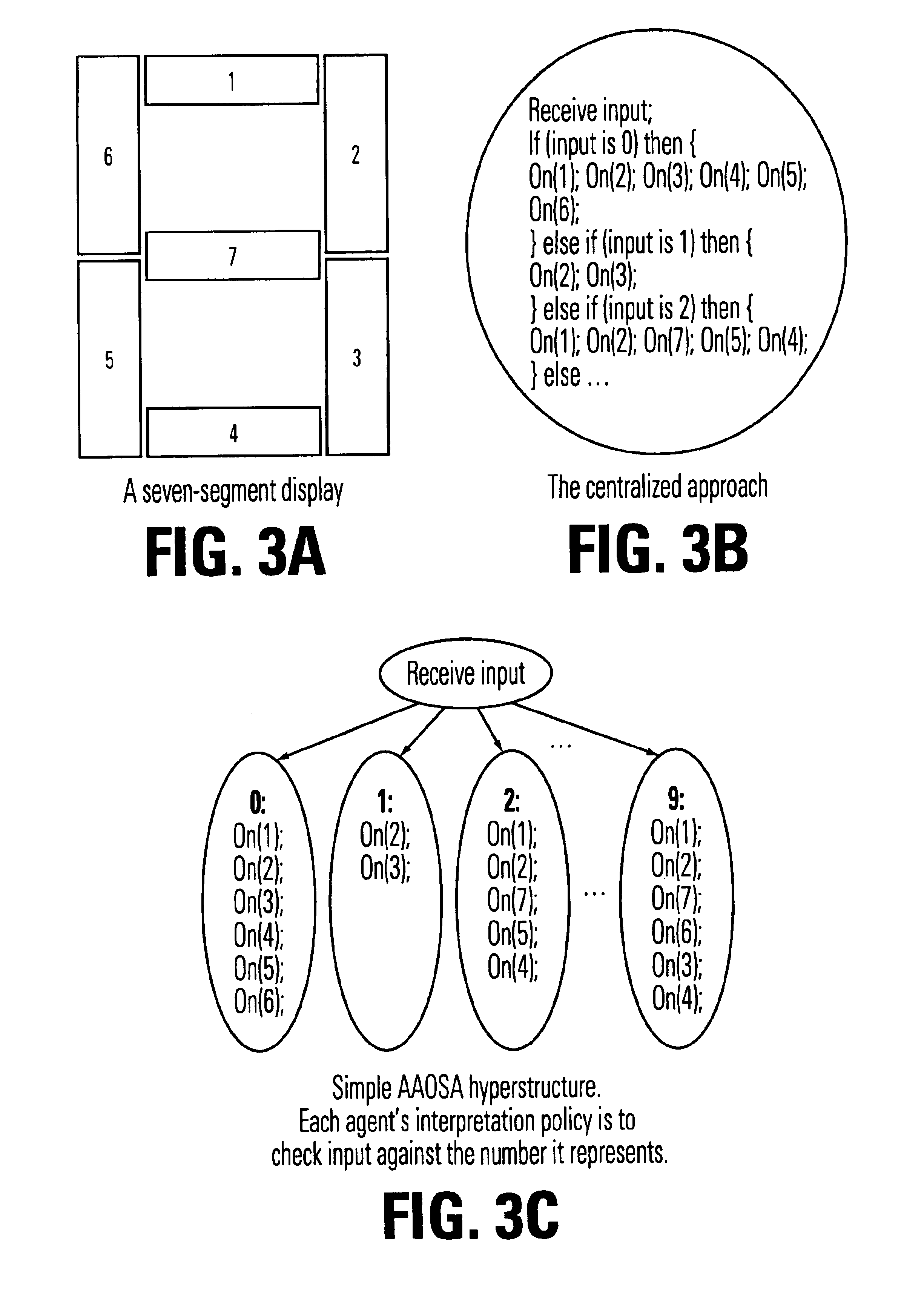Interpretation phase for adaptive agent oriented software architecture
a software architecture and agent-oriented technology, applied in the field of software methods and techniques for implementing agent-oriented architectures, can solve the problems of relatively complex and difficult use of most human-machine interfaces in use today, and achieve the effects of preventing the propagation of queries, increasing the depth of searches, and facilitating the interpretation phase of the above-described process
- Summary
- Abstract
- Description
- Claims
- Application Information
AI Technical Summary
Benefits of technology
Problems solved by technology
Method used
Image
Examples
case 1
[0219] The only claims made are H0. In this case there is only one full sequence. The symbol string of this full sequence is none other than the input string A1A2 . . . An itself, and obviously A1A2 . . . An is a valid derivation for itself.
case 2
[0220] We will assume that an agent is in a state in which all full sequences consisting of claims it has made so far are intermediate derivations for the input string. We will prove that the introduction of a new claim-sequence, according to condition (3) above, introduces new full sequences that are also intermediate derivations for the input string. To put it formally, if we denote the g claims made so far with Xi (0≦i≦g), our inductive hypothesis is:
∀Xi(0≦i≦g)∃XaXb . . . Xx|s(focus(Xa))=0^e(focus(Xx))=length(Is)−1^Xa<<Xb<< . . . Xi<< . . . <<Xx
^symbol(Xa).symbol(Xb) . . . symbol(Xi) . . . symbol(Xx)→*A1A2 . . . An
[0221]If now an agent makes the new claim-sequence c=1, . . . , Ck> from the sequence 1, . . . , Xm> using condition (3). The condition holds that:
(m>1)→∀i|(1≦i<m)^(focus(Xi)Xi+1))
[0222]Each new full sequence q=1, . . . qx> that is introduced by c contains at least one of C1, . . . , Ck. We will first show that q contains all claims C1, . . . ...
PUM
 Login to View More
Login to View More Abstract
Description
Claims
Application Information
 Login to View More
Login to View More - R&D
- Intellectual Property
- Life Sciences
- Materials
- Tech Scout
- Unparalleled Data Quality
- Higher Quality Content
- 60% Fewer Hallucinations
Browse by: Latest US Patents, China's latest patents, Technical Efficacy Thesaurus, Application Domain, Technology Topic, Popular Technical Reports.
© 2025 PatSnap. All rights reserved.Legal|Privacy policy|Modern Slavery Act Transparency Statement|Sitemap|About US| Contact US: help@patsnap.com



